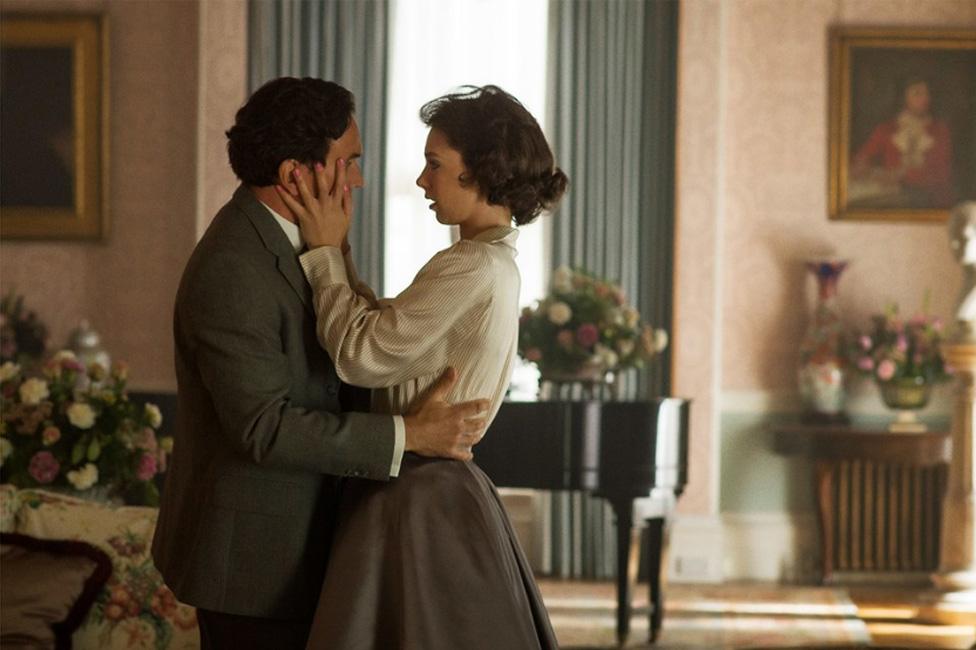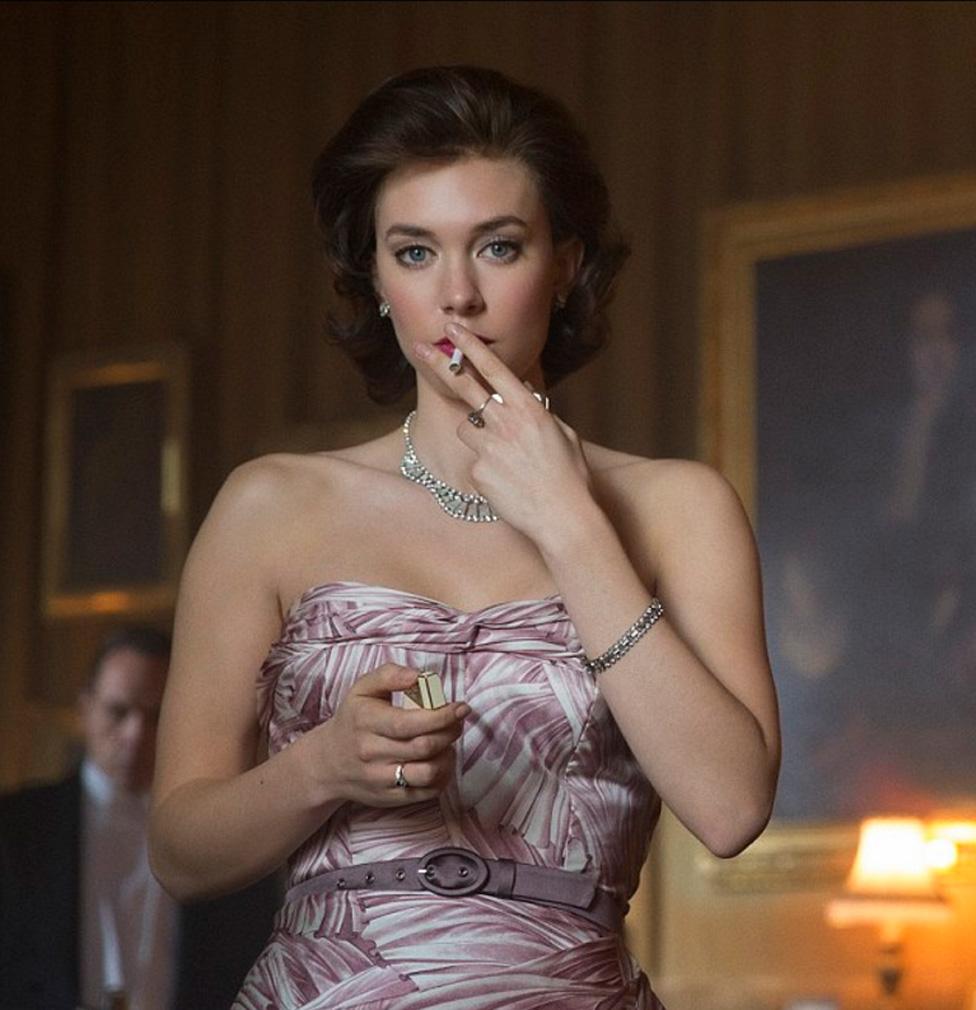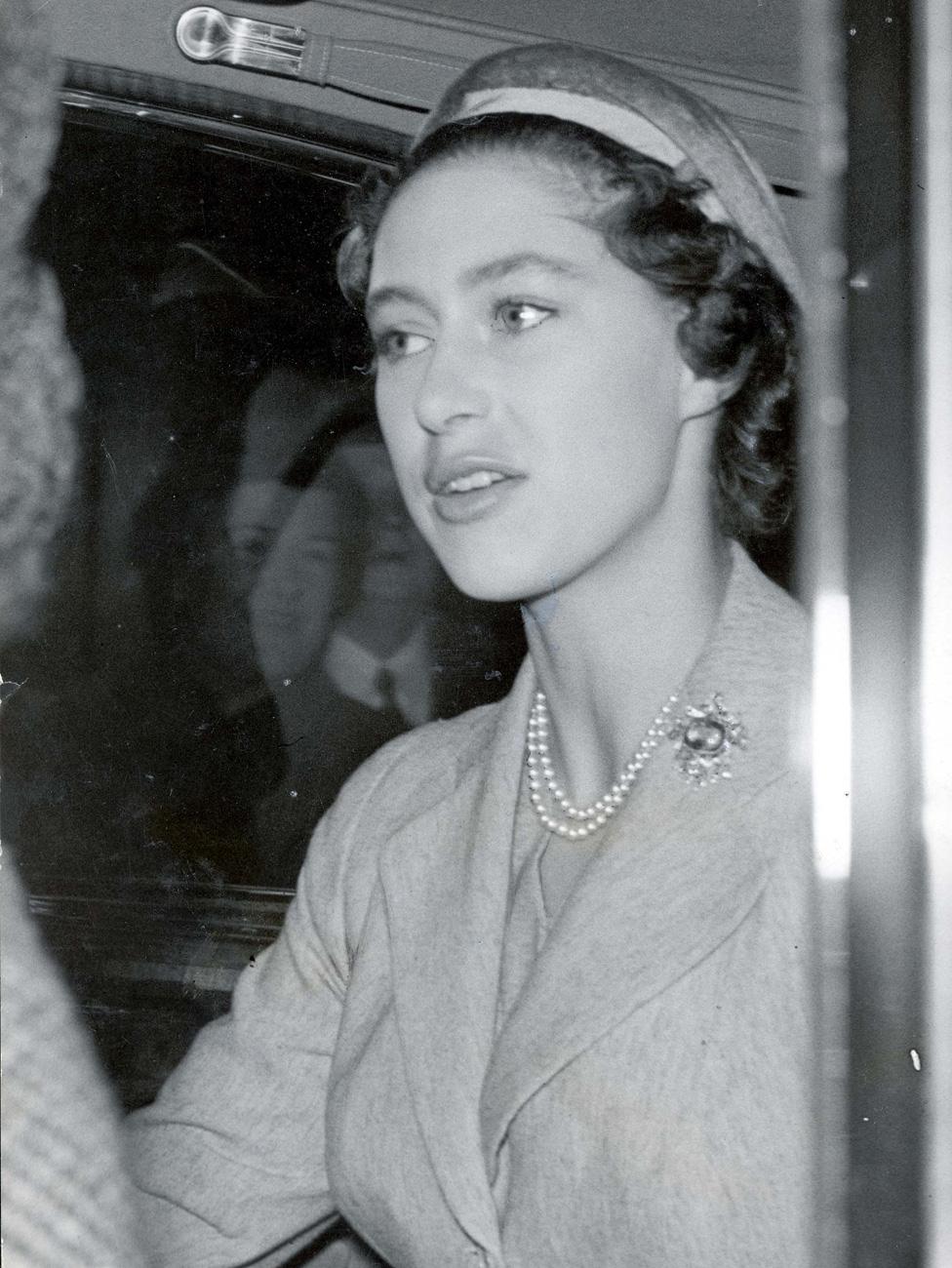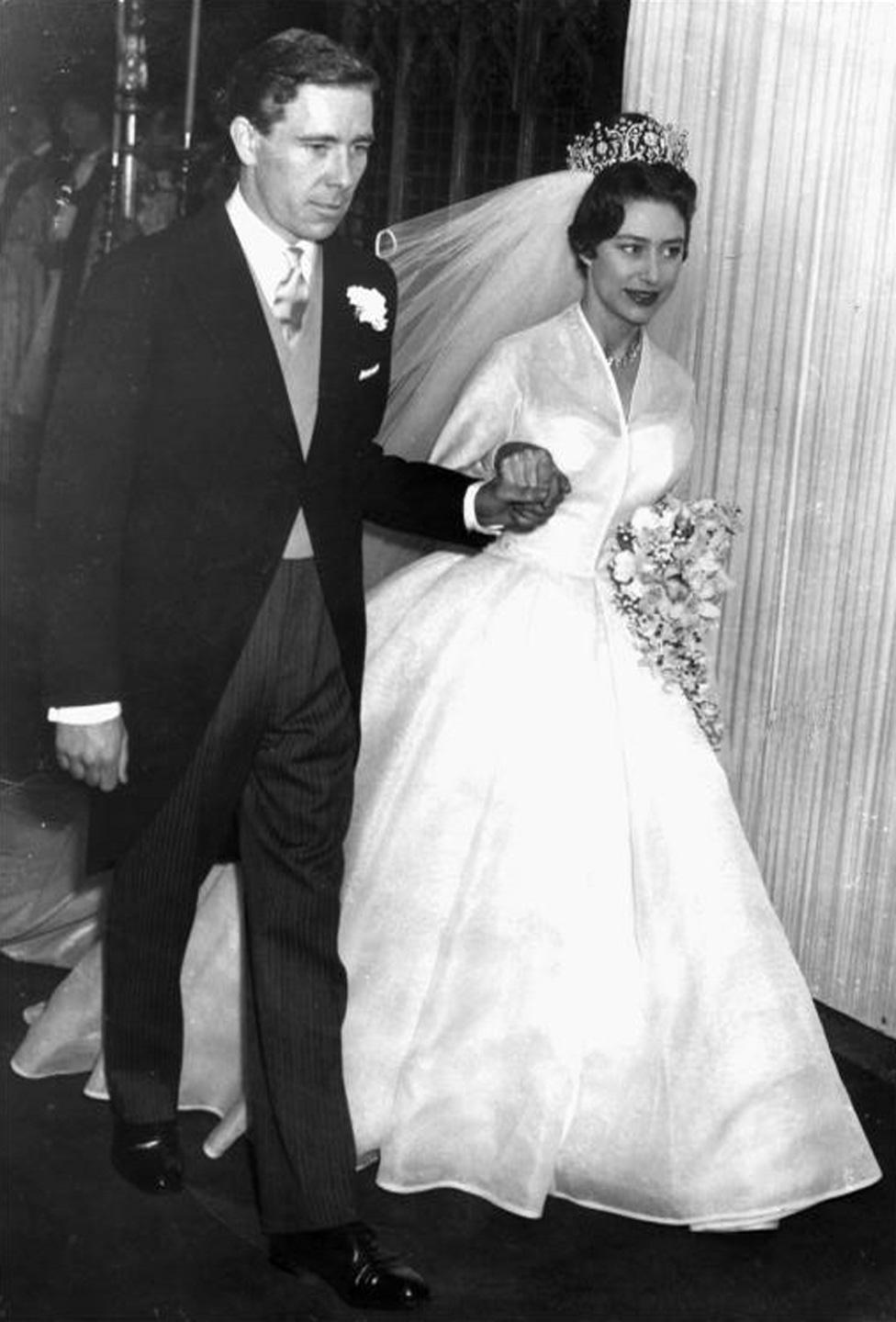Did the Queen stop Princess Margaret marrying Peter Townsend?
- Published

The lavish production of The Crown, the drama of the Queen's reign running on Netflix, perpetuates the myth that Princess Margaret was browbeaten into giving up Group Captain Peter Townsend, the war hero who proposed to her in 1953. But documents in the National Archives show that the reality was quite different, writes former BBC Court correspondent Paul Reynolds.
SPOILER ALERT:
THIS STORY REVEALS KEY PLOT DETAILS
The Crown shows Prime Minister Sir Anthony Eden stressing the cabinet's opposition to the marriage and threatening the princess with exile for five years if she goes ahead.
The Queen tells her sister chillingly that if she marries Townsend she will no longer be a member of the family.
But in fact, papers available in the National Archives since 2004 show that the Queen and Eden drew up a plan in 1955 under which Princess Margaret could marry Townsend while keeping her royal title and her civil list allowance of £6,000 a year plus another £9,000 on marriage. She could live in this country and even continue with public duties if the public approved, as was highly likely.
However, she would have to renounce her rights of succession and those of her children.
Princess Margaret and Peter Townsend, a former Battle of Britain pilot, fell in love when he was an equerry first to George VI and then to Elizabeth II. In 1952 he divorced his wife on the grounds of her adultery and subsequently proposed to Margaret.

Princess Margaret, King George VI, Queen Elizabeth, Group Captain Peter Townsend and Princess Elizabeth in the Royal Box at the Strand Theatre (August 1946)
However, the Queen was required to give permission for the marriage under the Royal Marriages Act of 1772 and, under pressure from the government of Winston Churchill and the Church of England which opposed divorce, she refused. Instead Margaret and Townsend were told to wait for two years until she was 25 and more able, under the Act, to choose for herself. Townsend was despatched to be an air attache in Brussels, living on his own in a hotel room.
After the two years was up, there was still a problem. The Queen maintained her refusal to give permission. The princess, having reached the age of 25, could have asked Parliament to override this refusal but that would have caused a sensation. This time, however, a compromise was worked out. The government was now under Anthony Eden who had been divorced and remarried himself.
He pledged to amend the Act to remove Margaret and her children from the succession. The Queen's permission would therefore be unnecessary. It was simple and decisive - the Act was blocking the marriage, so the Act would be changed. The Queen agreed.
Far from opposing her sister's marriage, the Queen's attitude was summed up by Eden in a letter to Commonwealth prime ministers: "Her Majesty would not wish to stand in the way of her sister's happiness."

Vanessa Kirby as Princess Margaret in The Crown
Eden himself, in his letter to Commonwealth prime ministers was very sympathetic to Princess Margaret. "Exclusion from the Succession would not entail any other change in Princess Margaret's position as a member of the Royal Family," he wrote.
One mystery is why the princess herself, only three days after the final draft of the proposal was produced, announced on 31 October 1955 that she would not be marrying Townsend after all.
A clue may come in a letter in the files, from the princess herself to Eden in August 1955. She says she will see Townsend in October: "It is only by seeing him in this way that I feel I can properly decide whether I can marry him or not." This letter indicates perhaps that her determination to marry him was not quite as strong as has been believed.

Princess Margaret returns to London from Balmoral in October 1955 for her meeting with Townsend
The National Archives file contains the three drafts of what is called "Summary of Procedure".
The princess would have said: "I have come to the conclusion that in all the circumstances the best course for me to follow is to marry P.T. and give up my rights to the Succession…" This formulation is not as romantic as an earlier one which read: "I have come to the conclusion that it is necessary for my future happiness that I should marry P.T."
Townsend was still frowned on by some in the establishment and the removal by officials of the reference to Margaret's happiness and the use of his initials only may reflect this.
The Queen would then consult her government and the Commonwealth governments, who had, the papers show, actually been squared by Eden beforehand. The government, at the Queen's request, would introduce legislation to amend the 1772 Act and Commonwealth governments would do the same.
A statement by the prime minister to Parliament was drawn up explaining why. It stated that the Act was "out of harmony with modern conditions".
The statement also drew on some devastating criticism of the Act by the Lord Chancellor Lord Kilmuir, who as David Maxwell Fyfe had been a barrister and Home Secretary. In a scrawled letter to Eden in September 1955 he stated his view that the Act probably did not even apply to Princess Margaret because of its contradictory drafting. He wrote: "This Act has no pride of ancestry, is badly drawn and uncertain and embarrassing in its effect."
Kilmuir added: "I think that at least 75% of the electorate would be in favour of the marriage being somehow allowed."
That helps to explain why the government was so receptive to the plan for the princess to marry.
But when she met Townsend in October, she, or he, decided against the marriage.
And yet the image remains in the public imagination of a cornered monarch, a hostile government and a young woman forced to give up her war hero.
Postscript: On 6 May 1960 Princess Margaret married the photographer Antony Armstrong-Jones, who was created Lord Snowdon and Viscount Linley. In 2015 the 1772 Act was replaced by the Succession to the Crown Act which lays down that only the nearest six people in line to the throne now have to get the monarch's permission to marry. (Princess Margaret ceased to be among the six nearest in line with the birth of Zara Phillips, the Queen's second grandchild, in 1981.)

Join the conversation - find us on Facebook, external, Instagram, external, Snapchat , externaland Twitter, external.